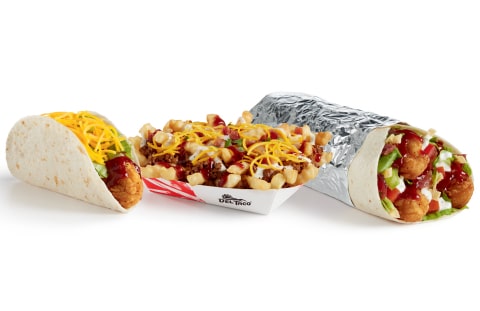The entirety of the global foodservice industry has been turned on its head by the most disruptive force to ever hit it in the coronavirus pandemic. But times of dramatic change can also create opportunities for tremendous upside, if you know where to look and have the wherewithal to build and execute on a bold and decisive strategy.
Restaurant industry suppliers are one segment experiencing such opportunity now—equivalent to the sellers of picks and shovels during the Gold Rush.
What’s the Size of the Prize?
The global foodservice supply chain represents more than $1 trillion in annual sales. The foodservice equipment market is about $37 billion, and the foodservice technology space is currently close to $500 million.
The landscape for foodservice equipment and technology will dramatically change once tech applications from other industries make their way into foodservice.
We estimate the Total Addressable Market (TAM) for these tech applications is worth $3.1 trillion globally (across industries).
We also estimate restaurants will allocate one-third of CAPEX to tech-enabled improvements, resulting in a $35 to $73 billion industry globally over the next few years.
The biggest areas of concern (and opportunity) include food safety, logistics, restaurant efficiency, and tech-enabled productivity enhancements.
Around 20 percent of the foodservice equipment industry corresponds to quick-service restaurants, and this is the fastest-growing end-user category.
Food distributors sales were down between 10–20 percent in 2020 due to COVID, presenting an opportunity for further consolidation.
Food distributors allocate 1 percent of revenue to CAPEX, modernization and tech-enabled productivity gains will require re-thinking CAPEX allocations.
It’s not easy to unlock share of the global food ecosystem. Here, we’ll touch on the challenges and opportunities suppliers face (including distributors, equipment manufacturers, and technology providers) and strategies to better understand the minds of restaurant chain buyers.
Some key Takeaways:
The foodservice distribution and supply chain model are antiquated. Restaurant operators are reshuffling their vendors and looking for improvements to build moats around their business via an updated tech stack.
It’s the perfect time for suppliers to take on partnerships to expand their reach, think about their purpose and ESG investments, and invest into R&D for productivity-enhancing technology.
Large foodservice equipment companies can become platforms for bolt-ons. There is an opportunity to take something dumb and mature, something smart and sexy, and put them together.
Foodservice Suppliers: Time to Retool Offerings
After a hurricane, many people sell their (damaged) property, and others come in to buy on the cheap and build bigger, stronger houses. That scenario leads to good business for contractors. This is a good analogy for what’s happening in the aftermath of COVID with foodservice. The changes that were accelerated by this crisis will mean a boon for those on the supply side that are able to retool, reformat, and quickly redesign and align their business for this next normal.
There’s plenty of available funds and foodservice suppliers can take on growth capital to make the necessary investments to benefit from the re-tooling the industry needs.
How Can Foodservice Suppliers Grow and Expand?
Broaden Reach: Regional players can become national powerhouses through M&A, partnerships, new product development, and by improving their ability to secure enterprise-level accounts (including in international markets).
ESG Plays: Many suppliers give up on trying to secure big chain accounts because of red tape and the difficulty to convince them to switch providers (we know this can be a tough hurdle to clear). However, products with an ESG angle can easily turn an outbound sales strategy into inbound demand. For example, Starbucks ban on single-use plastic straws translated into a new demand for straw-less lids and compostable plastic straws that only a few companies have the technology to produce.
Smart and Sexy: The most “modern” appliance in the restaurant industry has a green screen on it. There is an opportunity to combine smart features into “dumb” equipment to make them smarter. Many suppliers are realizing it’s time to invest into R&D, product, and channel development. It’s a question of who can prepare fast enough.
“Smart & Sexy” Case Study: Drive-Thru 2.0
How much will improvements to drive-thrus mean over the next few years? In the U.S., half of the food consumed is served at restaurants (food away from home) and about half that is at quick- and limited-service operators. Quick-service and fast-casual chains with drive-thrus usually see between 50–70 percent of sales via the drive-thru.
Considering 3–5 percent CAPEX allocations (equivalent to the industry median and top-quartile), there would be a resulting TAM of $4.9–$8.5 billion in drive-thru improvements (including contractors, equipment, and new restaurant technology) annually.
How are drive-thrus becoming smart? McDonald’s is a good example. The company acquired Apprente to bring automation voice tech to the drive-thru and Dynamic Yield AI to customize the experience.

Restaurant Operators: Tech Enabling Growth and
Productivity Gains
COVID forced operators to re-think their approach and reminded many of the rewards of innovation. Large chains are making massive investments into technology that improves productivity and promotes sales growth. And even though the median revenue retracted 14 percent in 2020 (considering U.S. publicly traded restaurant companies) more than a quarter of these companies grew. Those who grew were driven by either acquisitions or tech-enabled top-line enhancements.

Not all operators can afford to make the sort of investments like the McDonald’s and the Starbucks of the world do, but there’s an opportunity to take a new look at vendor partners and the supply chain for improvements and to make infrastructure investments.
An Opportunity for Disruption
There are a number of incumbents across the foodservice supply chain that have been entrenched in their place. However, the opportunity for disruption is growing significantly.
Investments will be pouring in from foodservice operators, investors, suppliers and technology companies. In the next few years, there will be massive market share shifts and new equipment categories (and other tech) that weren’t at trade shows five years ago, but operators will be beating down doors just to find.
Aaron Allen & Associates, a global foodservice consulting practice, has worked with clients spanning 100+ countries, collectively posting more than $200 billion in revenue across nearly every geography, category, cuisine, segment, operating model, ownership type, and phase of the business life cycle.







